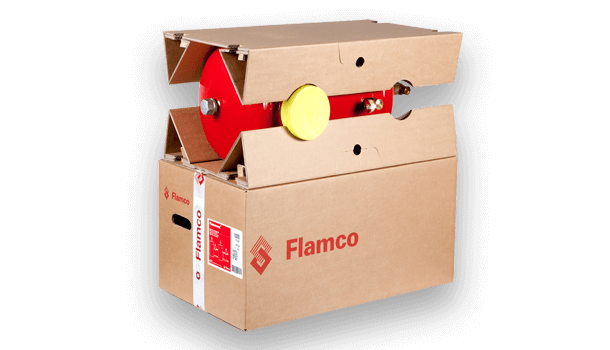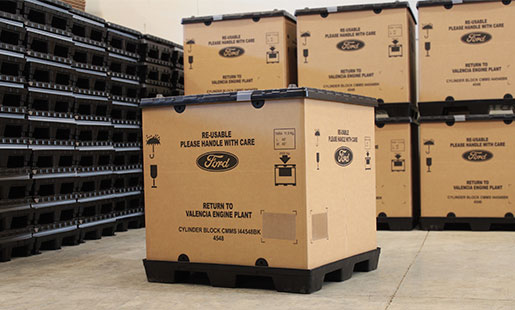Bulk Container Recycling Initiatives: Sustainably Browsing Sector
Bulk Container Recycling Initiatives: Sustainably Browsing Sector
Blog Article
Effective Industrial Recycling Solutions for Sustainable Product Packaging: A Comprehensive Overview
That's where this comprehensive overview on effective commercial recycling remedies for lasting packaging comes in. By checking out vital areas such as packaging material selection, making for recyclability, implementing reusing framework, working together with recycling companions, and monitoring and determining recycling success, this guide will certainly furnish you with the understanding and devices essential to make informed choices and drive positive modification within your company. Whether you're a product packaging professional, sustainability supervisor, or merely interested in the subject, this guide will certainly provide beneficial understandings and techniques to help you browse the world of lasting product packaging.
Packaging Material Selection
The selection of packaging products plays an essential role in ensuring the sustainability of industrial reusing solutions. The option of materials is crucial in lessening ecological influence and maximizing recycling efficiency when it comes to sustainable packaging. Choosing the ideal materials can assist reduce waste generation, conserve sources, and advertise a circular economy.
Materials like cardboard, paper, glass, and specific types of plastics can be reused multiple times without losing their top quality. On the other hand, products that are difficult to reuse, such as non-recyclable compounds or blended plastics, can produce difficulties for the reusing procedure and might end up in landfills or burners.
Another consideration is making use of renewable and naturally degradable products. Packaging made from renewable energies, such as plant-based plastics or biopolymers, can help reduce dependence on nonrenewable fuel sources and alleviate environment adjustment. Furthermore, biodegradable materials break down naturally in time, minimizing the buildup of waste in garbage dumps.
In addition, the weight and quantity of product packaging materials must be reduced to decrease transport prices and power consumption. Lightweight materials not only need less resources throughout manufacturing yet also add to reduce carbon emissions during transportation.
Creating for Recyclability
In order to guarantee the recyclability of packaging products, thoughtful design is essential. Creating for recyclability involves creating product packaging that can be easily sorted, divided, and refined in reusing centers. One important aspect of creating for recyclability is the selection of products. Packaging designers ought to focus on the usage of products that are widely approved for recycling and have actually developed reusing frameworks. Materials such as glass, aluminum, and particular kinds of plastic, like family pet and HDPE, are frequently recycled and should be chosen over materials that are expensive or hard to recycle.
Another essential factor to consider in making for recyclability is the elimination of unneeded components or products. By reducing the variety of layers, finishings, and additional components, product packaging can be made easier and simpler to recycle. In addition, developers should intend to lower the usage of blended products, as they can complicate the reusing process.

Implementing Recycling Facilities
Reliable application of recycling infrastructure is vital for the success of industrial recycling remedies. Without proper infrastructure in area, the recycling process comes to be inefficient and ineffective, impeding the total goal of sustainable packaging.
To carry out reusing infrastructure successfully, numerous crucial elements require to be considered. First of all, there need to be an efficient collection system that promotes the splitting up and collection of recyclable materials. This can include assigned reusing containers in public areas, in addition to collaborations with waste monitoring companies for curbside pickup and sorting.
When accumulated, the recyclable products require to be carried to reusing centers in a prompt manner. This requires efficient logistics and transportation networks, guaranteeing that the products get to the ideal facilities immediately.
At the recycling facilities, advanced sorting and processing technologies ought to be in place to separate different sorts of materials efficiently. This includes making use of automated sorting makers, optical scanners, and hands-on sorting methods.
Moreover, there must be a robust market demand for recycled materials. This can be achieved through collaborations with manufacturers and industries that make use of recycled products in their manufacturing procedures. Producing a steady market for recycled materials incentivizes the recycling industry and advertises the round economy.
Working Together With Recycling Partners

One trick element of working together with recycling companions is the establishment of clear interaction networks. It is necessary to establish open lines of interaction to help with the exchange of information, updates, and comments. This enables both parties to remain informed concerning the development of recycling initiatives and address any type of challenges or concerns that may occur.
Additionally, cooperation can include collaborations in executing and designing reusing programs. Reusing partners can give important understandings and guidance in establishing effective collection systems and determining one of the most suitable recycling technologies. By interacting, services and recycling companions can enhance the recycling procedure and reduce waste.
In addition, partnership can expand beyond the operational aspects of recycling. It can likewise encompass advocacy and education efforts. By signing up with pressures, businesses and reusing partners can elevate recognition regarding the relevance of reusing and advertise the adoption of lasting product packaging methods amongst consumers and various other stakeholders.
Tracking and Measuring Recycling Success
To guarantee the Get the facts performance of industrial recycling remedies and the achievement of sustainable product packaging goals, it is critical for companies and their recycling partners to establish a comprehensive system for monitoring and measuring reusing success (industrial metal packaging). Gauging and tracking recycling success permits companies to examine the effect of their reusing initiatives, recognize locations for enhancement, and established significant targets for future progression
One method to track reusing success is with the usage of data collection and analysis tools. By collecting data on the amount of product packaging waste produced, the percentage of waste that is recycled, and the types of materials being reused, organizations can get valuable understandings into their reusing efficiency. This information can then be analyzed to recognize fads, patterns, and locations of inadequacy.
An additional essential element of tracking imp source and determining recycling success is developing clear and standard metrics. This permits organizations to compare their efficiency against sector criteria and track their progress gradually. Metrics such as recycling rates, waste diversion rates, and greenhouse gas emissions can give a measurable procedure of a company's recycling success.

Conclusion
Finally, applying effective commercial recycling solutions for sustainable product packaging calls for mindful consideration of product packaging product choice, developing for recyclability, implementing reusing framework, collaborating with recycling partners, and tracking and measuring reusing success. By integrating these methods, organizations can add to an extra environmentally-friendly and lasting strategy to packaging, lowering waste and promoting the circular economic climate.
By exploring essential locations such as product packaging product option, developing for recyclability, implementing reusing framework, teaming up with reusing partners, and tracking and determining reusing success, this guide will certainly outfit you with the knowledge and devices needed to make informed decisions and drive favorable change within your organization. Product packaging designers ought to focus on the usage of materials that are extensively accepted for recycling and have established recycling facilities.Collaboration with recycling companions is crucial for the effective execution of commercial recycling solutions and the success of lasting product packaging goals. By joining forces, businesses and recycling companions can raise understanding regarding the importance of reusing and promote the adoption of sustainable product packaging techniques amongst consumers and other stakeholders.
By gathering information on the amount of product packaging waste created, the percent of waste that is recycled, and the kinds of materials being recycled, services can get beneficial insights into their reusing efficiency.
Report this page